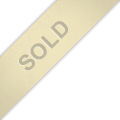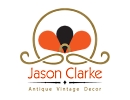Contact Seller
Jason Clarke Antiques
Tel07815 046645Please quote Antiques Atlas.


 Quality antique Victorian rosewood jewellery box
Quality antique Victorian rosewood jewellery box
 Fine quality antique Regency rosewood tea caddy
Fine quality antique Regency rosewood tea caddy
 George II laburnum tea chest
George II laburnum tea chest
 George III octagonal satinwood tea caddy
George III octagonal satinwood tea caddy
 Rare 18th Century mahogany two bottle carrier
Rare 18th Century mahogany two bottle carrier
 Regency Rosewood Tea Caddy
Regency Rosewood Tea Caddy
 19th Century Viennese cigar box
19th Century Viennese cigar box
 1600s carved Bible Box
1600s carved Bible Box
 Early 19th century Paper Mache Snuff Box
Early 19th century Paper Mache Snuff Box
 George V Ebonised Jewellery Box and Tray c.1925
George V Ebonised Jewellery Box and Tray c.1925
 French Palais Royal opaline glass casket, c1840
French Palais Royal opaline glass casket, c1840
 Georgian Mahogany Cellarette / Wine Cooler
Georgian Mahogany Cellarette / Wine Cooler
Non UK callers :
+44 7815 046645
Pair of George III Mahogany & Inlaid Knife Urns


A stunning pair of George III mahogany knife urns with satinwood and ebony inlay.
With silver hallmarked lock escutcheons dating to 1810, these superbly executed urns are of the highest quality reminiscent of the neo-classical design work of architect and designer Robert Adam of around the late eighteenth century. Constructed from the finest mahogany with vertical strands of satinwood and ebony inlay, the lids open to reveal their original interiors which have receptacles for knives, forks and spoons. A rare feature as they were regularly converted for use as desk tidies by the Victorians.
Pictured in Hepplewhite’s, “The Cabinet Makers & Upholsterer’s Guide” of 1788 (see images), knife cases were at the height of their popularity during the last quarter of the eighteenth century although there are records of their use dating back to the seventeenth century. Both Hepplewhite and Sheraton included designs for them in their work although the cases in question are more closely related to Hepplewhite’s work. He (or his wife) remarked that,
“The universal utility of this piece of antique furniture renders a particular description not necessary. They may be made of mahogany inlaid, or of satin, or other wood at pleasure.”
A few years later, Sheraton remarks that,
“As these cases are not made in regular cabinet shops, it may be of service to mention where they are executed in the best taste by one who makes it his main business ie. John Lane, No44 St Martins Le Grand, London”
The fact that Hepplewhite feels little need to explain the concept and that by Sheraton’s time, the item was so universal that one man could make it his sole business is testament to their popularity.
They are further evidenced in Gillow’s cost books of 1796 where they are described as “vause knife cases”.
Sadly, they are fewer in number today but they provide wonderful examples of eighteenth and early nineteenth century cabinet work. The hallmarks would suggest that these are either a late example of the classical Adam’s style before the somewhat heavier Regency style gained popularity or the silver mounts were a later addition to a late eighteenth century set. Either way, their manufacture can be reliably dated to between 1770 & 1810.
Visually stunning, these superb vases would have been situated at either side of a sideboard or on separate pedestals, and remain a perfectly useable piece of antique furniture.
SellerJason Clarke Antiques
View all stock from
Jason Clarke Antiques

 Private dealer
Private dealer
By appointment only
Newbury
Berkshire
Tel : 07815 046645
Non UK callers : +44 7815 046645
With silver hallmarked lock escutcheons dating to 1810, these superbly executed urns are of the highest quality reminiscent of the neo-classical design work of architect and designer Robert Adam of around the late eighteenth century. Constructed from the finest mahogany with vertical strands of satinwood and ebony inlay, the lids open to reveal their original interiors which have receptacles for knives, forks and spoons. A rare feature as they were regularly converted for use as desk tidies by the Victorians.
Pictured in Hepplewhite’s, “The Cabinet Makers & Upholsterer’s Guide” of 1788 (see images), knife cases were at the height of their popularity during the last quarter of the eighteenth century although there are records of their use dating back to the seventeenth century. Both Hepplewhite and Sheraton included designs for them in their work although the cases in question are more closely related to Hepplewhite’s work. He (or his wife) remarked that,
“The universal utility of this piece of antique furniture renders a particular description not necessary. They may be made of mahogany inlaid, or of satin, or other wood at pleasure.”
A few years later, Sheraton remarks that,
“As these cases are not made in regular cabinet shops, it may be of service to mention where they are executed in the best taste by one who makes it his main business ie. John Lane, No44 St Martins Le Grand, London”
The fact that Hepplewhite feels little need to explain the concept and that by Sheraton’s time, the item was so universal that one man could make it his sole business is testament to their popularity.
They are further evidenced in Gillow’s cost books of 1796 where they are described as “vause knife cases”.
Sadly, they are fewer in number today but they provide wonderful examples of eighteenth and early nineteenth century cabinet work. The hallmarks would suggest that these are either a late example of the classical Adam’s style before the somewhat heavier Regency style gained popularity or the silver mounts were a later addition to a late eighteenth century set. Either way, their manufacture can be reliably dated to between 1770 & 1810.
Visually stunning, these superb vases would have been situated at either side of a sideboard or on separate pedestals, and remain a perfectly useable piece of antique furniture.
Price The price has been listed in British Pounds.
Conversion rates as of 10/APR/2025. Euro & Dollar prices will vary and should only be used as a guide.
Always confirm final price with dealer. Sold
Category Antique Boxes
Period George III Antiques
Material Mahogany
Origin English
Item code as542a196 / 301
Status Sold
£0 
$0.00 
€0.00 

$

€

Conversion rates as of 10/APR/2025. Euro & Dollar prices will vary and should only be used as a guide.
Always confirm final price with dealer. Sold
View all stock from
Jason Clarke Antiques

 Private dealer
Private dealerBy appointment only
Newbury
Berkshire
Tel : 07815 046645
Non UK callers : +44 7815 046645
You may also be interested in
 Quality antique Victorian rosewood jewellery box
Quality antique Victorian rosewood jewellery box
 Fine quality antique Regency rosewood tea caddy
Fine quality antique Regency rosewood tea caddy
 George II laburnum tea chest
George II laburnum tea chest
 George III octagonal satinwood tea caddy
George III octagonal satinwood tea caddy
 Rare 18th Century mahogany two bottle carrier
Rare 18th Century mahogany two bottle carrier
 Regency Rosewood Tea Caddy
Regency Rosewood Tea Caddy
 19th Century Viennese cigar box
19th Century Viennese cigar box
 1600s carved Bible Box
1600s carved Bible Box
 Early 19th century Paper Mache Snuff Box
Early 19th century Paper Mache Snuff Box
 George V Ebonised Jewellery Box and Tray c.1925
George V Ebonised Jewellery Box and Tray c.1925
 French Palais Royal opaline glass casket, c1840
French Palais Royal opaline glass casket, c1840
 Georgian Mahogany Cellarette / Wine Cooler
Georgian Mahogany Cellarette / Wine Cooler







